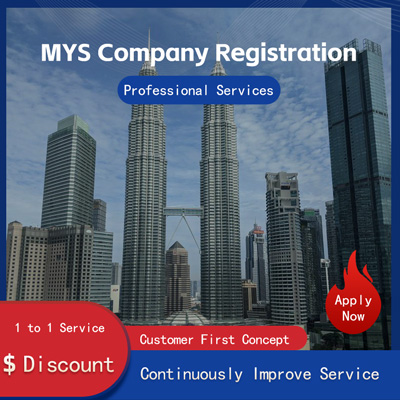
Bringing US Companies to Domestic Markets A Practical Guide to Navigating Globalization
How to Introduce a U.S.-Registered Company into the Chinese Domestic Market A Comprehensive Guide to International Expansion
In today’s globally integrated economy, an increasing number of Chinese companies are turning their attention to overseas markets. At the same time, many U.S.-registered companies are also seeking to expand their operations into China. Particularly in recent years, as cooperation between Chinese and American businesses has deepened in fields such as technology, e-commerce, healthcare, and education, the question of how to successfully introduce a U.S. company into the Chinese market has become a focal point for entrepreneurs and investors alike.

According to data released by China’s Ministry of Commerce in 2025, the actual amount of foreign investment used in China increased by approximately 4.3% year-on-year, with particularly active investments from the U.S. in high-end manufacturing, green energy, and biotechnology. This trend indicates that China remains a strong magnet for international capital and offers a favorable policy environment and market foundation for U.S. companies entering the country.
So, how can a U.S.-registered company be effectively introduced into the domestic Chinese market? This requires not only a deep understanding of China’s market rules and legal system, but also the development of a systematic and strategic approach to market entry.
1. Clarify Market Positioning and Strategic Objectives
Before entering the Chinese market, the first step for any U.S. company is to clearly define its market positioning and strategic goals. Consumer habits, policy environments, and competitive landscapes in China differ significantly from those in the U.S. For example, in 2025, Tesla introduced a special edition of the Model Y tailored to Chinese consumer preferences through localized design, which led to a significant increase in sales. This illustrates that only by thoroughly understanding the needs of the target customer base can a company develop competitive product and service strategies.
In addition, companies must decide on the mode of entry establishing a wholly foreign-owned enterprise WFOE, a joint venture JV, or acquiring a local company for a faster market entry. Each approach comes with different legal procedures and resource allocation requirements.
2. Legally Establish a Chinese Entity
For U.S. companies looking to operate in China, it is typically necessary to establish a legal business entity within the country. Common structures include WFOEs, JVs, and representative offices. Among these, WFOEs are the most popular because they allow full control over business decisions and offer greater flexibility in tax planning and fund transfers.
According to the revised 2025 version of China’s Negative List for Foreign Investment Access, the country has further relaxed restrictions on foreign investment in sectors such as finance, manufacturing, and education. This provides a more favorable policy environment for U.S. companies entering China.
However, companies must still comply with relevant laws such as the Foreign Investment Law and the Company Law to ensure legal and compliant operations during the establishment process. It is highly recommended that companies engage professional legal and accounting teams to assist with registration, tax registration, and foreign exchange management, to avoid operational obstacles caused by improper procedures.
3. Localization Is Key to Operational Success
After entering the Chinese market, U.S. companies often face challenges adapting to the local business environment. Localization is therefore a critical factor in determining success or failure. Localization goes beyond product adaptation-it also involves brand communication, marketing, and human resource management.
Take Amazon as an example although its e-commerce business in China did not achieve the expected success, its cloud service AWS successfully established a strong presence by partnering with local Chinese companies and maintaining steady growth. This demonstrates that even global brands must adopt effective localization strategies.
In terms of brand communication, U.S. companies should leverage major Chinese media and social platforms such as WeChat, Weibo, and Douyin TikTok for marketing. Additionally, establishing a local customer service system, optimizing payment methods like WeChat Pay and Alipay, and offering a Chinese interface can significantly enhance user experience.
4. Build a Stable Network of Partnerships
For long-term development in the Chinese market, U.S. companies must establish a stable network of local partners, including government agencies, industry associations, local suppliers, distribution channels, and investment institutions.
In recent years, many local governments have introduced policies to encourage foreign investment. For instance, Shanghai’s 2025 Action Plan for High-Quality Foreign Investment Development clearly outlines a package of support measures, including tax incentives, talent introduction, and project implementation assistance. These initiatives create a favorable business environment for U.S. companies.
Collaborating with local enterprises can also help reduce market entry costs. For example, when entering China, U.S. medical technology giant Johnson Johnson quickly established market influence through partnerships with local hospitals and research institutions. This approach helps shorten the market adaptation period and enhance brand recognition.
5. Focus on Brand Building and Long-Term Development
In the Chinese market, brand influence often surpasses the value of the product itself. For U.S. companies, building a brand that resonates with Chinese consumers is crucial. This requires sustained marketing investment, as well as alignment with mainstream Chinese values in areas such as corporate social responsibility, environmental sustainability, and user experience.
Apple serves as a good example. Its success in the Chinese market is not only due to its competitive product offerings, but also its strong emphasis on Chinese culture and social responsibility. In recent years, Apple has increased its investment in green energy in China and actively participated in education-related public welfare projects-efforts that have significantly enhanced its brand image.
After entering the Chinese market, U.S. companies should focus on storytelling, fulfilling social responsibilities, and building emotional connections with consumers to stand out in a highly competitive environment.
Conclusion
Successfully introducing a U.S.-registered company into the Chinese domestic market is a path filled with both challenges and opportunities. From strategic planning to legal compliance, from localized operations to brand development, every step plays a critical role in determining whether a company can establish a solid foothold in China.
In this era of globalization intertwined with localization, only those companies that truly understand the Chinese market, respect Chinese consumers, and integrate local resources will be able to thrive and achieve lasting success in this vibrant and dynamic market.
Helpful (0)
No help (0)
Still have questions after reading? More than 98,000 users have contacted us. Please fill in the following information to obtain business information.

Previous Article
What Documents Are Required to Successfully Register a Company in the U.S.?
Jul 19, 2025Next Article
Steps to Register a Company in the U.S. - Key Secrets to Successful Startup!
Jul 19, 2025Service Scope
MoreRecommended for You
- The Real Deal Behind Registering a Company in Singapore Hidden Challenges Risks No One Tells You!
- How to Register a Foundation Company in Singapore Key Steps Things to Watch Out For!
- Audit Cost Insights for Singapore Companies Key Factors and Market Trends Explained
- How to Start a Company in Singapore as a Foreigner? A Comprehensive Guide to the Registration Process and Secrets!
- S’pore vs HK Banks Which Is Better for Wealth Management? Find Out the Smart Choice
- How to Easily Open a Singapore Bank Account in Mainland China? Ultimate Guide + Practical Tips
- What's It Really Like to Start a Biz in Singapore? Full Breakdown from Registration to Operations
- NRA Bank Confirmation Revealed Secrets You Must Know About Different Account Types
- How to Smoothly Open a Singapore Bank Account in China? A Guide to the Process and Key Points to Note
- U.S. Embassy in China Consular Section One-Stop Service, How to Process Notarization More Efficiently?
- How to Open a US Bank Account for a Hong Kong Company? Essential Requirements Explained!
- Want to Open an Account at Standard Chartered Bank in Beijing? Understand the Requirements in One Article!
- Which U.S. States Have the Craziest Economic Policies? One Chart Explains All!
- How to Get a WY Business License Must-Know Tips Before Starting Your Biz!
- Can You Find U.S. Company Registration Info in China? A Clear Guide!
- How Long Does It Take to Cancel a US Bank Card? Uncovering the Process and Truth Behind It
- How Much Does a Power of Attorney Cost in the US? You Might Not Know These Details
- Opening a Personal US Account Isn't That Hard - Just Follow These Steps and Tips
- How to Read U.S. Company Quarterly Reports A Comprehensive Guide to Fundamentals and Key Details
- U.S. Corp Account Opening Guide Secrets to Effortlessly Kickstart Global Biz


 ONE
ONE








Customer Reviews
Small *** Table
December 12, 2024The experience was very good. I was still struggling to compare it with other companies. I went to the site a few days ago and wanted to implement it as soon as possible. I didn't expect that everything exceeded my expectations. The company is very large, with several hundred square meters. The employees are also dedicated and responsible. There is also a wall of certificates. I placed an order on the spot. It turned out that I did not make a wrong choice. The company's service attitude is very good and professional. The person who contacted me explained various things in detail in advance. After placing the order, the follow-up was also very timely, and they took the initiative to report the progress to me. In short, I am very satisfied and recommend this company!
Lin *** e
December 18, 2024When I first consulted customer service, they recommended an agent to me. They were very professional and patient and provided excellent service. They answered my questions as they came in. This 2-to-1 service model is very thoughtful. I had a lot of questions that I didn’t understand, and it’s not easy to register a company in Hong Kong. Fortunately, I have you.
t *** 7
December 19, 2024I originally thought that they only did mainland business, but I didn’t expect that they had been doing Hong Kong business and were doing very well. After the on-site interview, I decided to ask them to arrange the registration of my Hong Kong company. They helped me complete it very quickly and provided all the necessary information. The efficiency was awesome. It turns out that professional things should be done by professionals.👍
b *** 5
December 16, 2024In order to register a company in Hong Kong, I compared many platforms and stores and finally chose this store. The merchant said that they have been operating offline for more than 10 years and are indeed an old team of corporate services. The efficiency is first-class, and the customer service is also very professional.